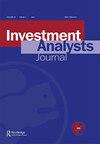基金业绩衡量标准的选择重要吗?
IF 2.2
4区 经济学
Q3 BUSINESS, FINANCE
引用次数: 5
摘要
摘要本文研究了使用基于不同投资组合绩效指标的排名的投资策略是否会导致不同的未来异常回报。将一组13种常用的风险调整绩效指标应用于1970年7月至2019年9月期间的美国股票共同基金数据集。研究结果显示了短期业绩持续性的一些证据,表明事前根据不同业绩衡量标准形成的投资组合会在事后产生异常回报。投资表现最好的基金和做空表现不佳的基金的策略提供了正超额回报和五因子阿尔法。然而,当调整动量因子时,很少有异常表现的证据。结果还表明,总体而言,使用不同的绩效指标几乎没有差异,但有一个明显的例外:Rachev比率。本文章由计算机程序翻译,如有差异,请以英文原文为准。
Does the choice of fund performance measure matter?
ABSTRACT This paper investigates whether investment strategies using rankings based on different portfolio performance measures lead to different future abnormal returns. A set of 13 commonly used risk-adjusted performance measures is applied to a dataset of US equity mutual funds over the period July 1970 to September 2019. The results show some evidence of short-term performance persistence, suggesting that portfolios formed on different performance measures ex-ante can generate abnormal returns ex-post. A strategy of investing in the top performing funds and shorting the poor performing funds provides positive excess returns and five-factor alphas. However, when adjusting for the momentum factor, there is less evidence of abnormal performance. The results also show that overall there is little difference arising from the use of different performance measures, but with one notable exception: the Rachev ratio.
求助全文
通过发布文献求助,成功后即可免费获取论文全文。
去求助
来源期刊

Investment Analysts Journal
BUSINESS, FINANCE-
CiteScore
1.90
自引率
11.10%
发文量
22
期刊介绍:
The Investment Analysts Journal is an international, peer-reviewed journal, publishing high-quality, original research three times a year. The journal publishes significant new research in finance and investments and seeks to establish a balance between theoretical and empirical studies. Papers written in any areas of finance, investment, accounting and economics will be considered for publication. All contributions are welcome but are subject to an objective selection procedure to ensure that published articles answer the criteria of scientific objectivity, importance and replicability. Readability and good writing style are important. No articles which have been published or are under review elsewhere will be considered. All submitted manuscripts are subject to initial appraisal by the Editor, and, if found suitable for further consideration, to peer review by independent, anonymous expert referees. All peer review is double blind and submission is via email. Accepted papers will then pass through originality checking software. The editors reserve the right to make the final decision with respect to publication.
 求助内容:
求助内容: 应助结果提醒方式:
应助结果提醒方式:


